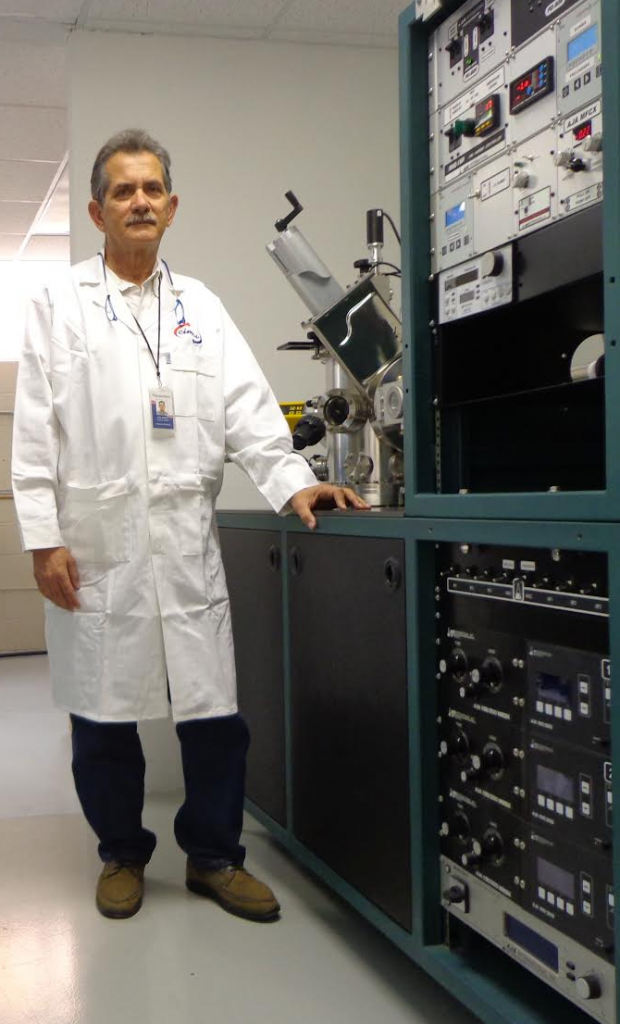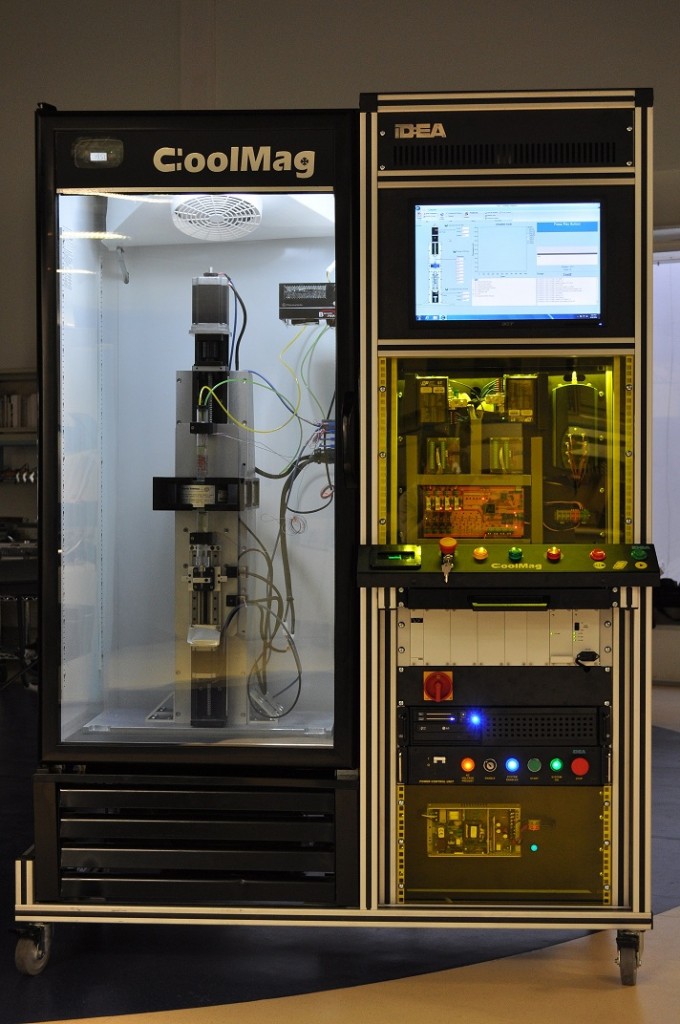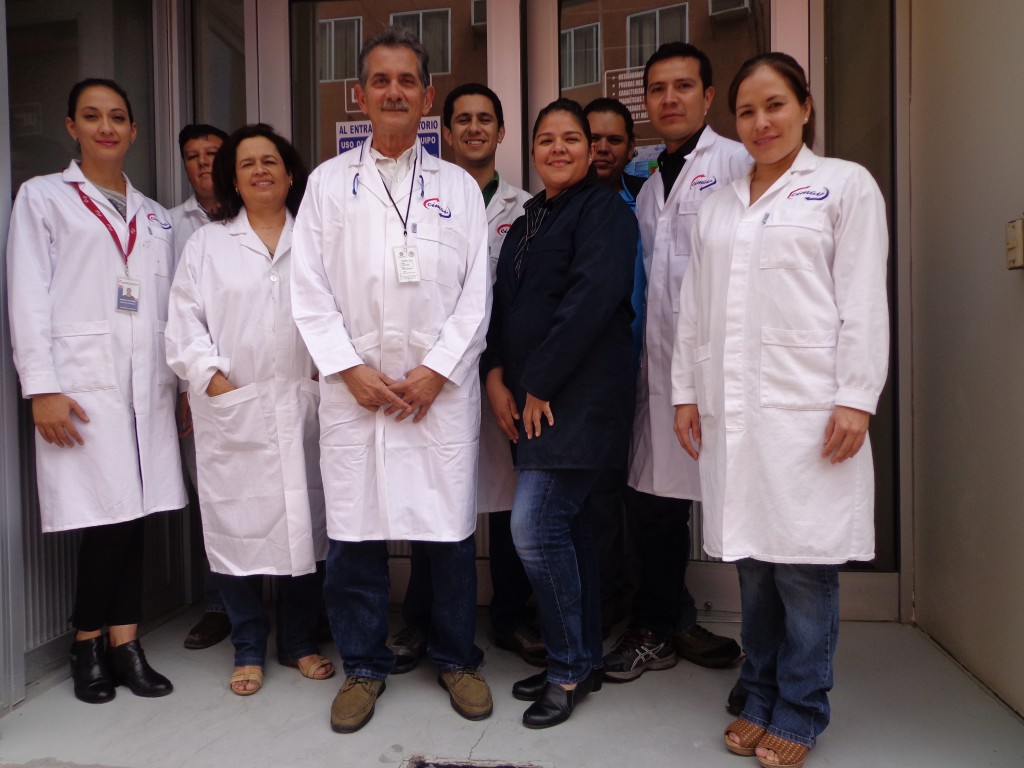Magnetic Refrigerator
Amongst the researches being conducted in this area of work, a prototype of magnetic refrigerator has been developed, which, unlike conventional refrigeration, it has the potential to save up to 25% of electricity, makes less noise and especially does not damage the ozone layer and create the greenhouse effect. With this development Cimav protects the environment and is placed at the forefront of technological innovation.
The main contribution is that it does not use harmful gas for the cooling process, because it is built using solid magnetocaloric materials that change their temperature when a magnetic field is applied to them using magnets.
The magnetic refrigerator is a technology Cimav has generated in collaboration with the company iDEA. iDEA is an integrated company that designs electronical and mechanical systems and develops proprietary software for various companies, particularly in the automotive industry.
Globally there is competition to find materials that are more efficient and economical in the field of magnetic refrigeration. For the success of this work, Cimav’s specialists investigate the magnetocaloric properties of lanthanum- strontium-calcium manganites.
These materials have a high heating and cooling capacity when a magnetic field is applied or removed respectively (this is the so called magnetocaloric effect). Besides that, manganites also have the advantage of being inexpensive, easy to manufacture and their Curie temperatures can be tuned for different cooling ranges.
Currently, researchers are in the stage of optimizing the microstructure and crystallite size, improving the purity and homogeneity of composition using novel routes such as sol-gel and microwave assisted synthesis.
Most of the scientific community is focused exclusively on the study of magnetocaloric materials; however Cimav goes further and has displayed the project in a broad concept and that together with the company iDEA managed to design and build an experimental magnetic refrigerator.
The knowledge generated in this project could also be applied to other cooling systems such as air conditioning for homes and cars.

- Magnetic Materials, with three sublines
- Lanthanum-strontium-calcium manganites-based magnetocaloric materials for multilayers regenerators used in magnetic refrigerators.
- FeCoB thin films that absorb electromagnetic waves in the RF and microwave range with applications in EMI/EMC (electromagnetic interference / electromagnetic compatibility)
- FeGa-based (gafenol) magnetostrictive materials for sensors and actuators.
- Magneto-transport studies of FeSeTe single crystals and ruthenocuprate superconductors.
- Nanostructured thermoelectric materials based on CoSb3 (Skutterudites).
- Magnetostrictive-piezoelectric magnetoelectric composites.
- Tungsten and molybdenum oxide thin films with applications in gas sensors and electronic noses.
- In0.1Sn0.9P2O7 ionic electrolyte for fuel cell applications.

